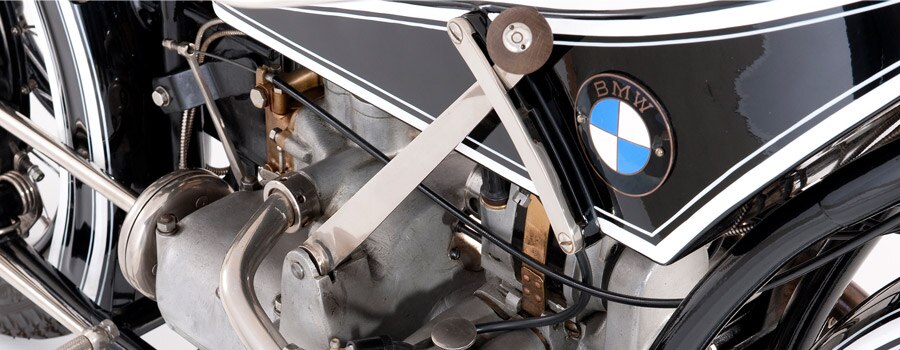|
BMW Roundel Badge Replacement
BMW Hood or Trunk Roundel Emblem Replacement
Nearly all BMW badges are held in place with plastic grommets. There are two posts on the back of the badge that press into these grommets and that's the only thing holding the badge to the car. Replacement is very easy and can be done with many blunt tools usually found in your home or toolbox. The best tools are a plastic trim pry bar or a plastic putty knife. You can also use a butter spreading knife or a flathead screwdriver but you will need a towel or other protection for the paint around the emblem.Watch as we demonstrate BMW emblem removal using a plastic trim pry tool:
New grommets are not necessarily required but they are cheap and guaranteed to properly secure the emblem. The old grommets will expand from prying out the old badge, leaving the new badge too loose. Nearly all BMW badges take two grommets but some newer, larger badges take three (some X5/X6/X7 models).
Roundel Emblem FAQ
My badge is gone. Can I just buy the sticker?
Unfortunately, not. The emblem is a copyright and BMW only sells the hood and trunk badges as complete emblems. This makes sense when you consider BMW cares about how their logo is displayed.
What tools do I need to remove the badge?
A sharp, flat piece that will not scratch your paint is best. There are dedicated automotive trim removal tools that are best. Aside from specialty tools, a plastic putty knife will also work if it's strong enough to not snap. We've also seen a butter knife or screwdriver used but you have to protect the paint with a microfiber cloth. To remove the grommets you will need needle-nose pliers or cut them out.
Why do I need new grommets?
You may be able to re-use the original grommets. But you won't know how strong they are until you install the new emblem. If the old grommets have enlarged or broken you don't want to be without fresh grommets. Plus, they are cheap.
Is the hood and trunk badge the same?
In many older models the same badge part number is used for both front and rear. But that stopped being the typical case in the mid-2000s. Most of the time the difference is the diameter of the badge. But the contour can also change.
Can I buy colored roundels?
We do not sell different colors. But you can find small vinyl overlays from numerous online sellers.
Is the roundel a spinning propeller?
No, although it does appear that way and it is a logical question. BMW originally manufactured small engines for aircraft before World War I and the logo was created during this period. The blue and white are the official state colors of Bavaria. But it wasn't until 1928 that the spinning propeller effect was created in an advertisement. See below for more roundel history.
Why are they called "bimmers"?
The origin of "bimmer" is not really known. Motorcycles from the British company BSA were called "Beezers" and it's thought that the Brits transferred the nickname to BMW motorcycles to create "Beemers". The Boston Chapter of the BMW CCA has used "Bimmer" as the title to their chapter newsletter since 1973 and many consider this the source of the nickname. In any case, BMW automobiles are pronounced BIM-ers. The motorcycles are known as BEEM-ers. Our company name is also BIM-er-world and not BEEM-er-world.
BMW Roundel and Corporate History
The BMW roundel emblem traces its design back to the company's original name - Rapp Motor Works. Karl Rapp produced aircraft and automobile engines in Munich before World War I. The current BMW headquarters at Milbertshofen-Munich is built just a few blocks away from the original Rapp facility. Rapp produced four and inline-6 cylinder engines (sound familiar?). The company changed its name to Bayerische Motoren Werke (Bavarian Motor Works) in 1917, following the departure of Rapp from the company. The iconic roundel design appeared soon after, closely modeled after the Rapp logo - B M W around the top rim with the Bavarian blue and white flag in the center.
BMW as a manufacturer continued producing a variety of items after World War I ended, including a small portable industrial engine that proved to be a success in light aircraft and motorcycles. After acquiring a motorcycle company in 1922, BMW re-designed the bike and mounted its latest flat-twin boxer air-cooled engine sideways in the frame, and the iconic BMW boxer motor was born. Look closely at today's modern BMW motorcycles and much of the same principles are still used. BMW has been producing motorcycles longer than they have been cars.

A very early BMW badge on the 1923 R32 motorcycle. Photo: BMW.
The first cars built by the company were someone else's. To expand their portfolio, BMW bought a struggling German car manufacturer called Automobilwerk Eisenach, who had the exclusive German production rights for a British small car called the Austin Seven. They named it the Dixi DA-1 3/15. The purchase of Automobilwerk Eisenach by BMW in 1928 included the license to produce the Seven/Dixi. BMW produced the 3/15 - the first automobile with the BMW roundel - from 1929 to 1931. Ironically, BMW purchased the MINI brand in 1996, which was still producing the iconic small car first launched in 1959 as the Austin Seven.

BMW dealer sign in Berlin, 1929. Photo: BMW.
The first car designed and manufactured entirely in-house was the 1932 3/20 and it was heavily influenced by the Dixi.
| Sort by Name | Sort by Price |

